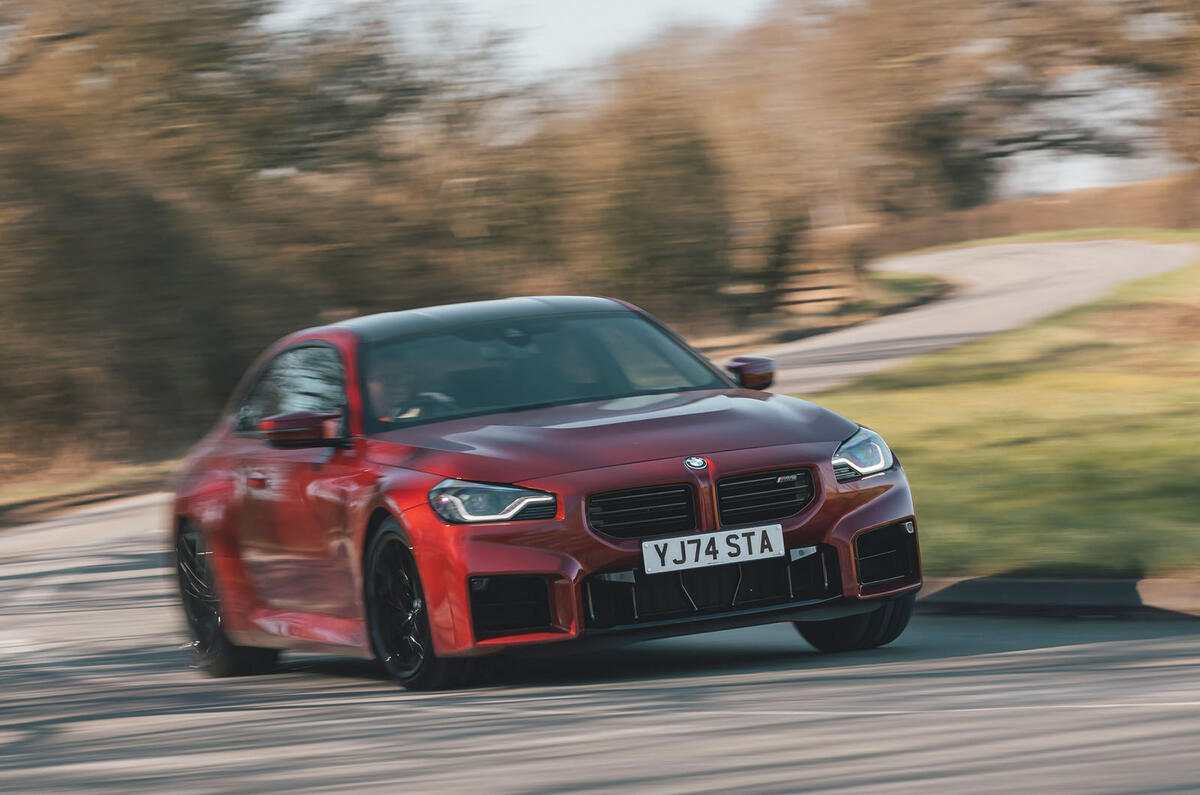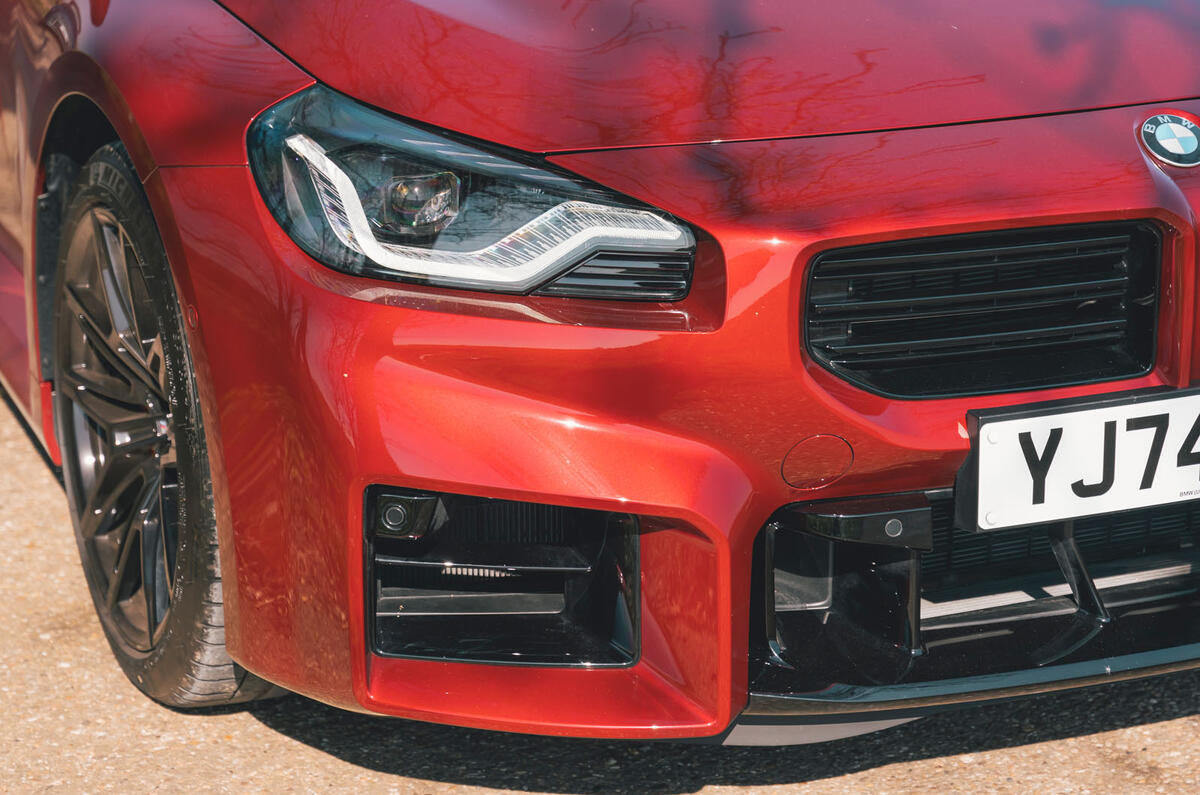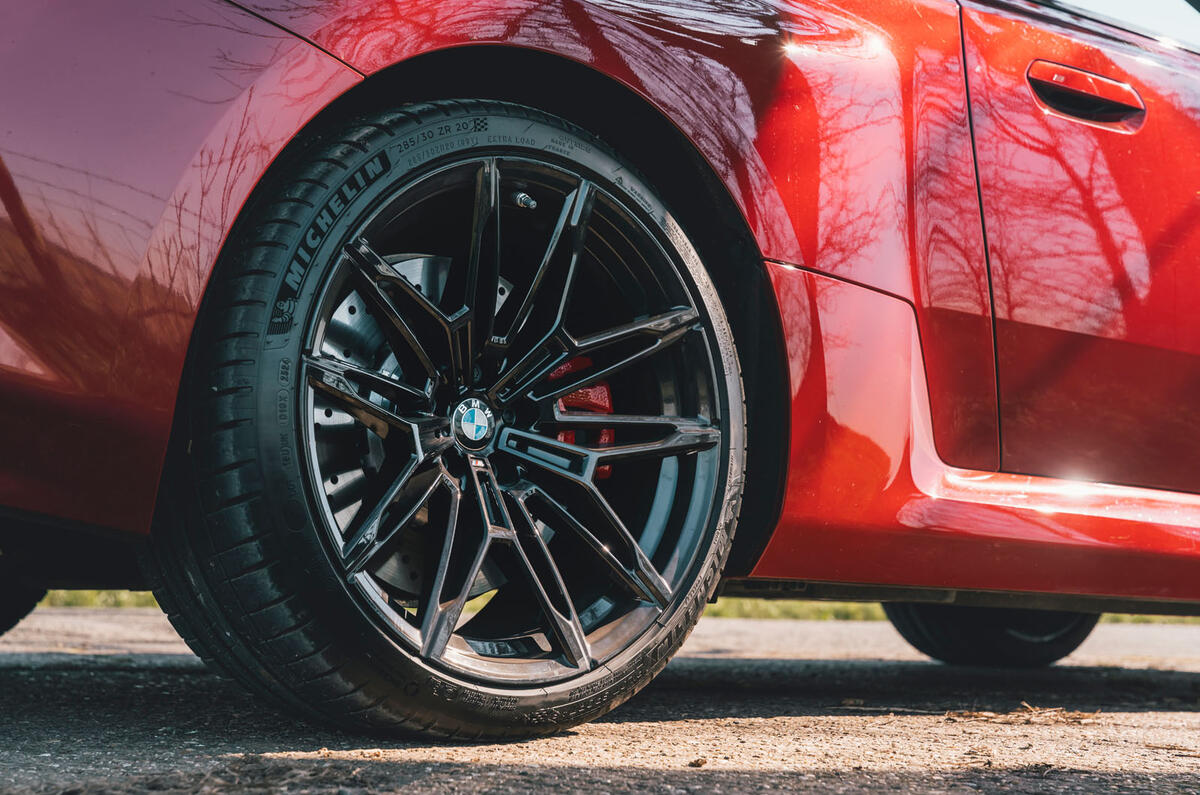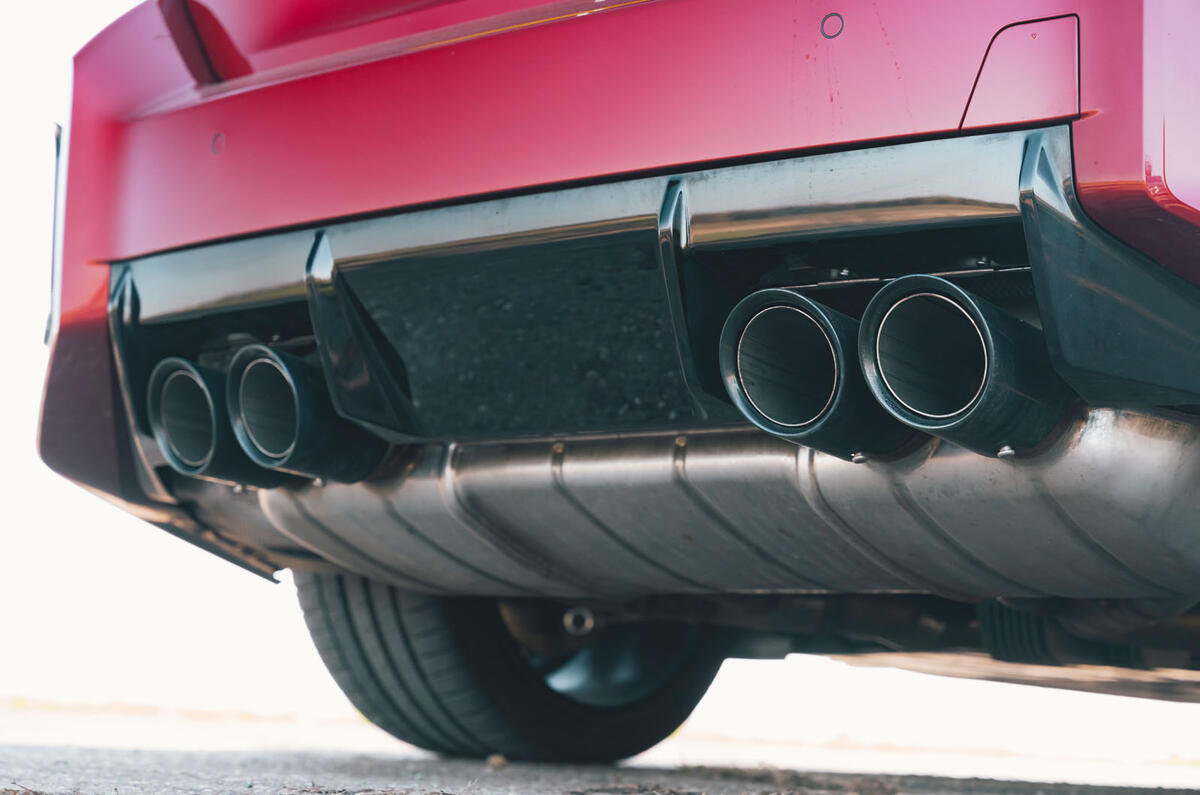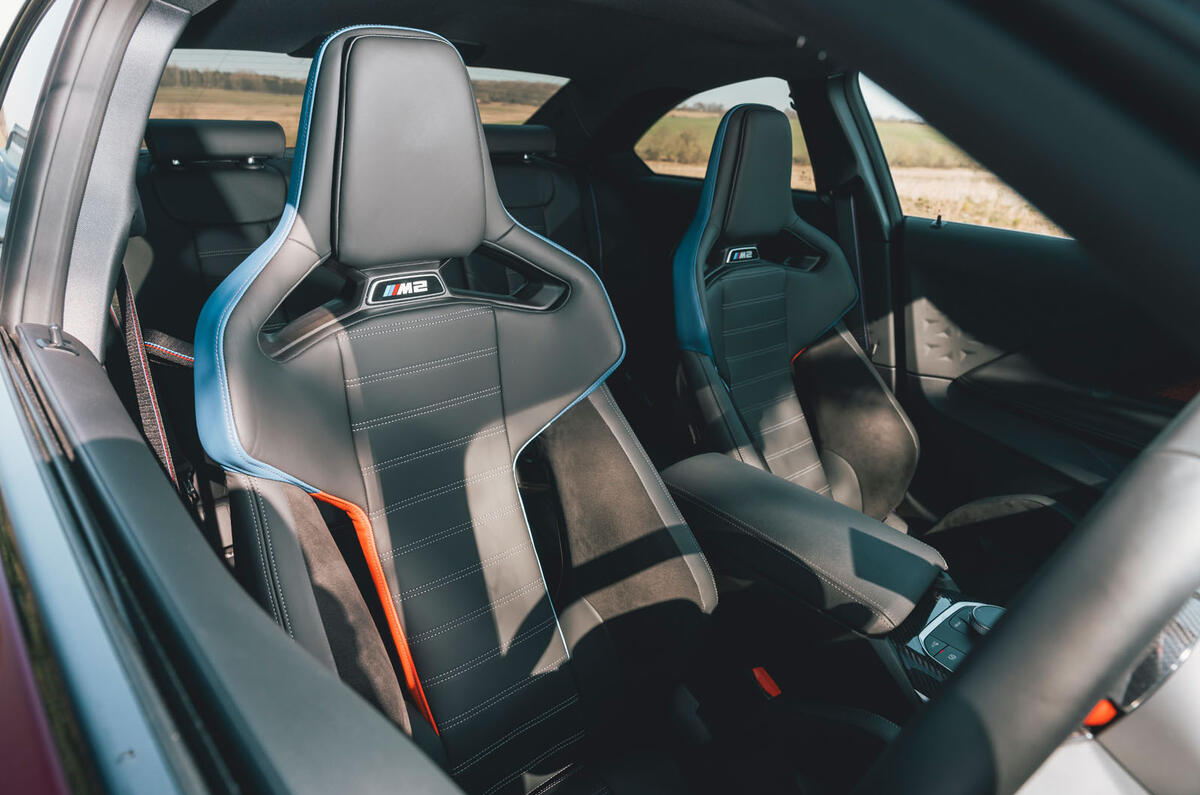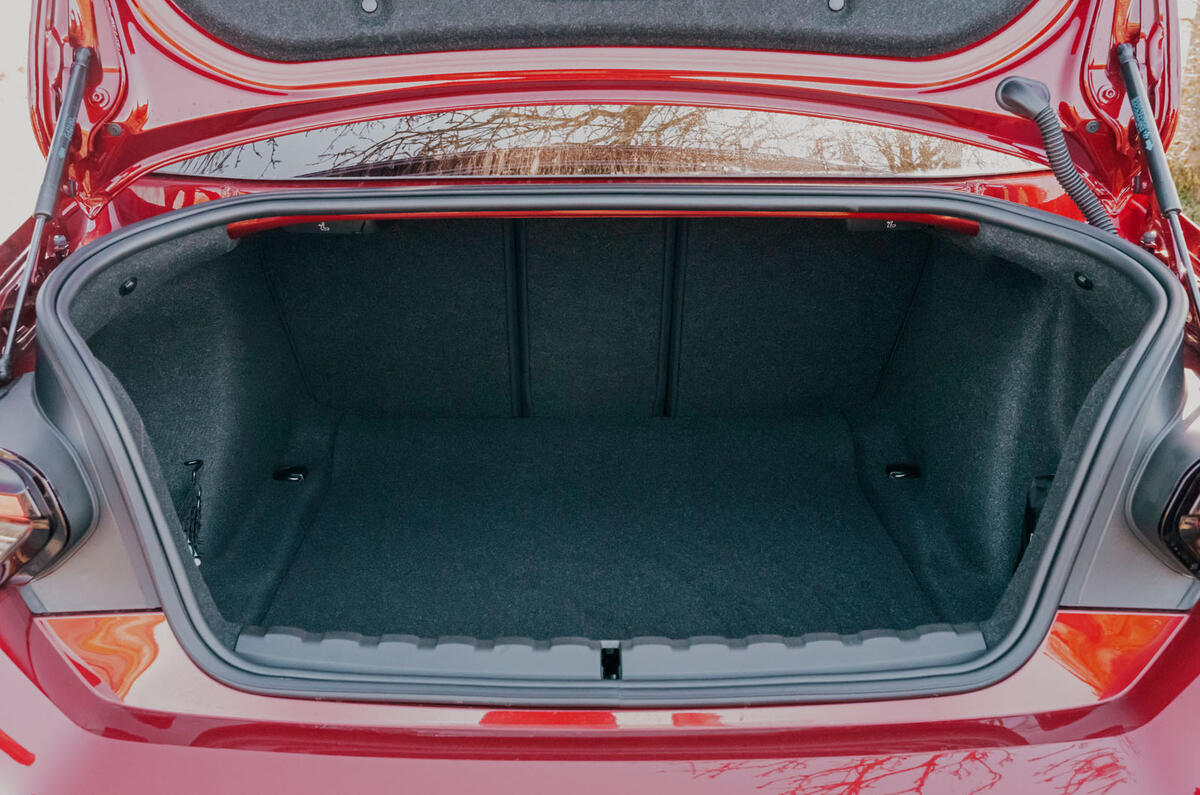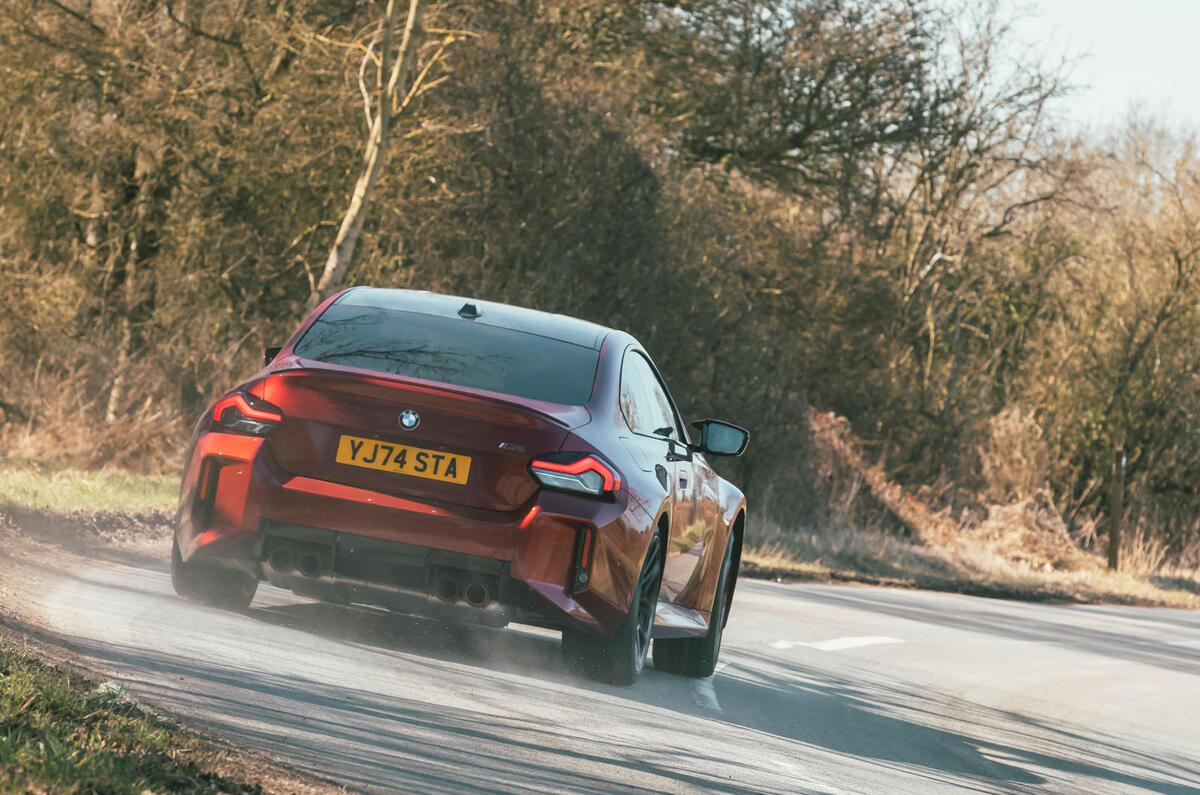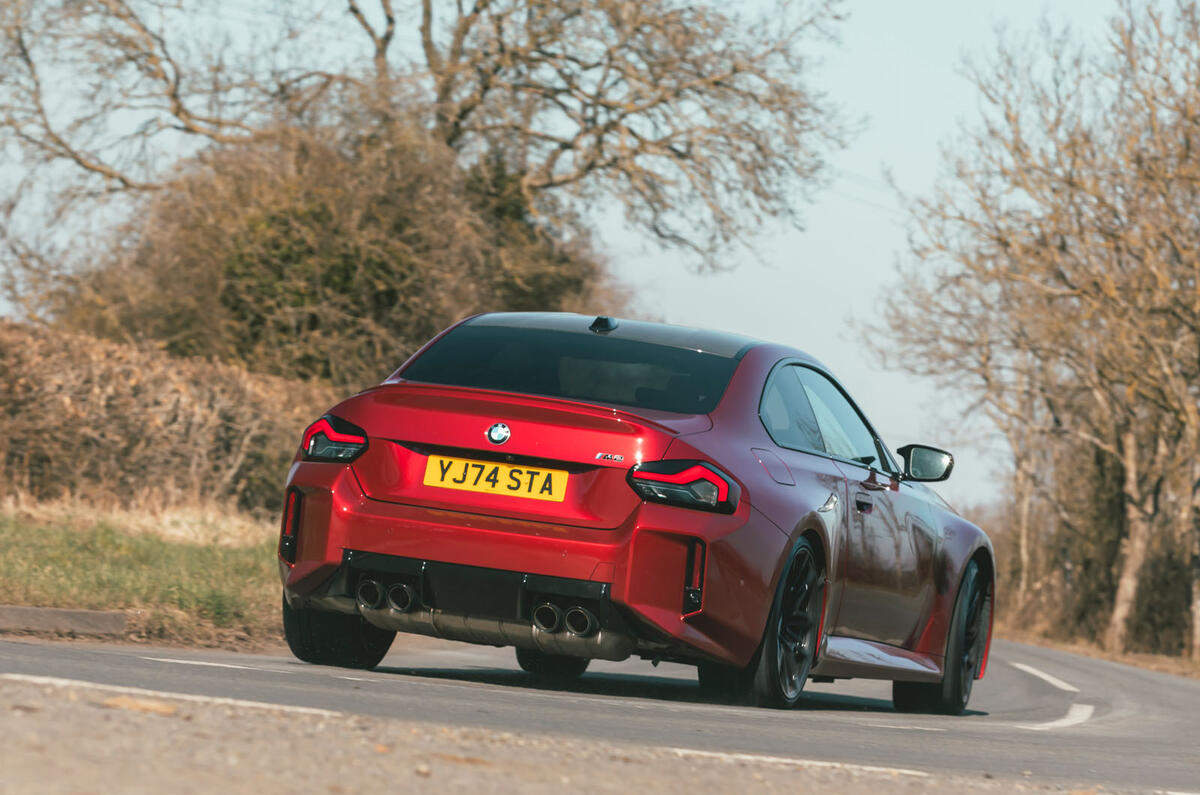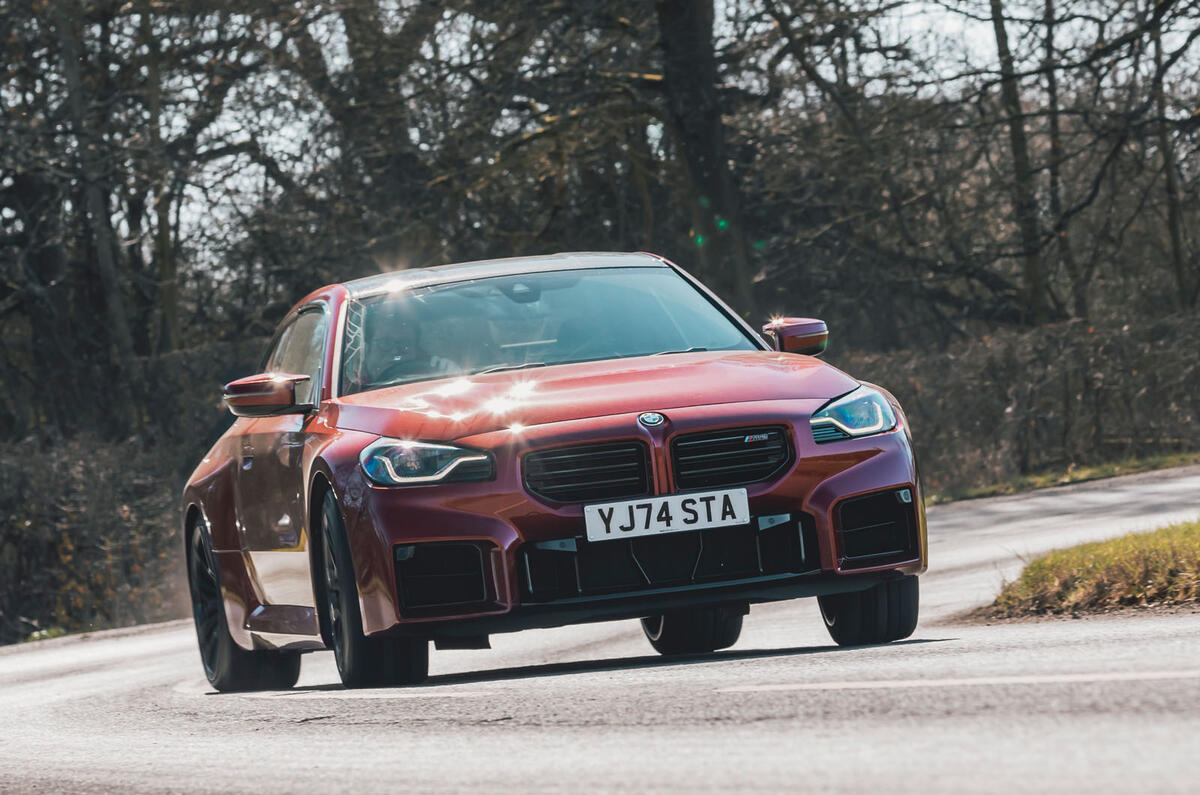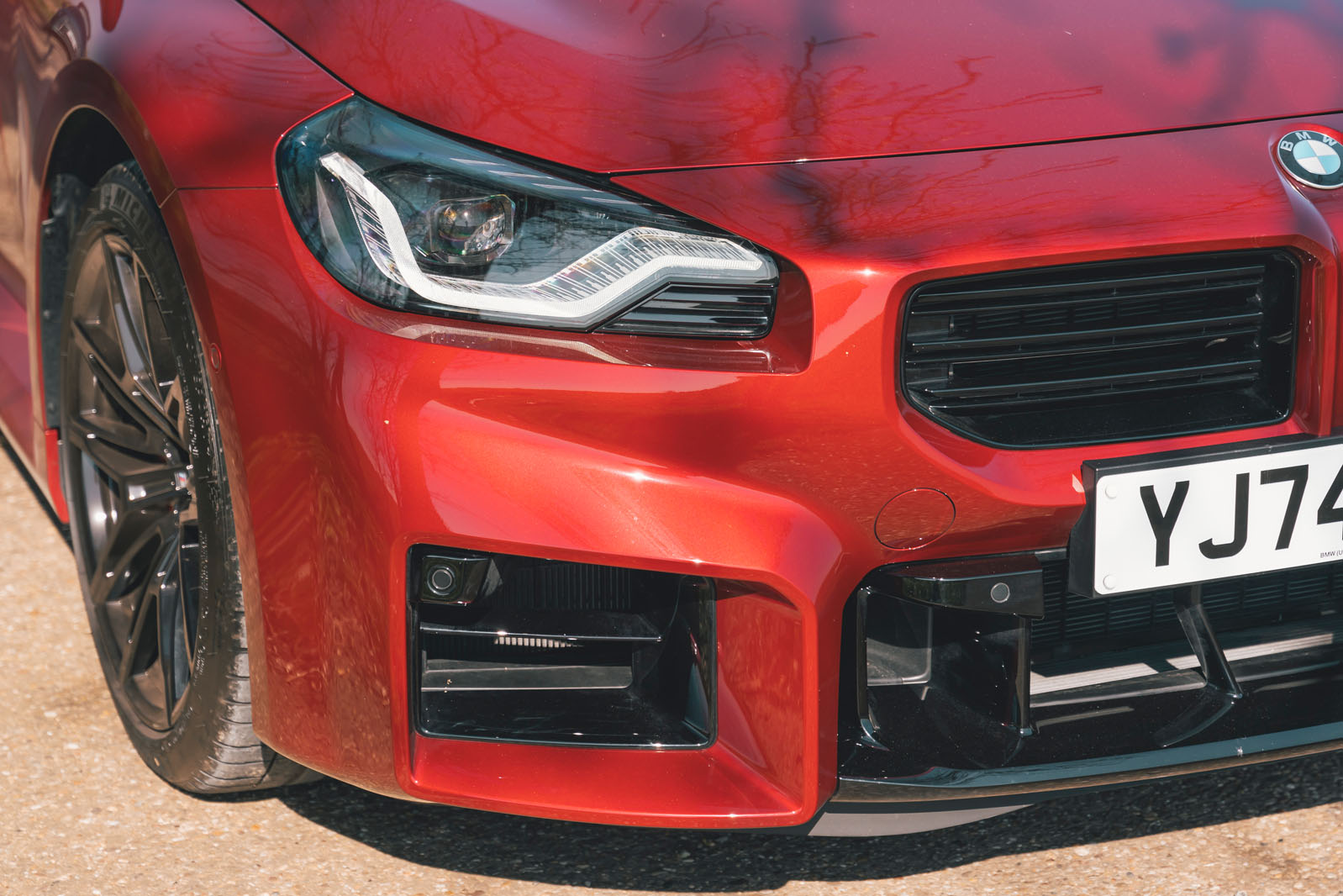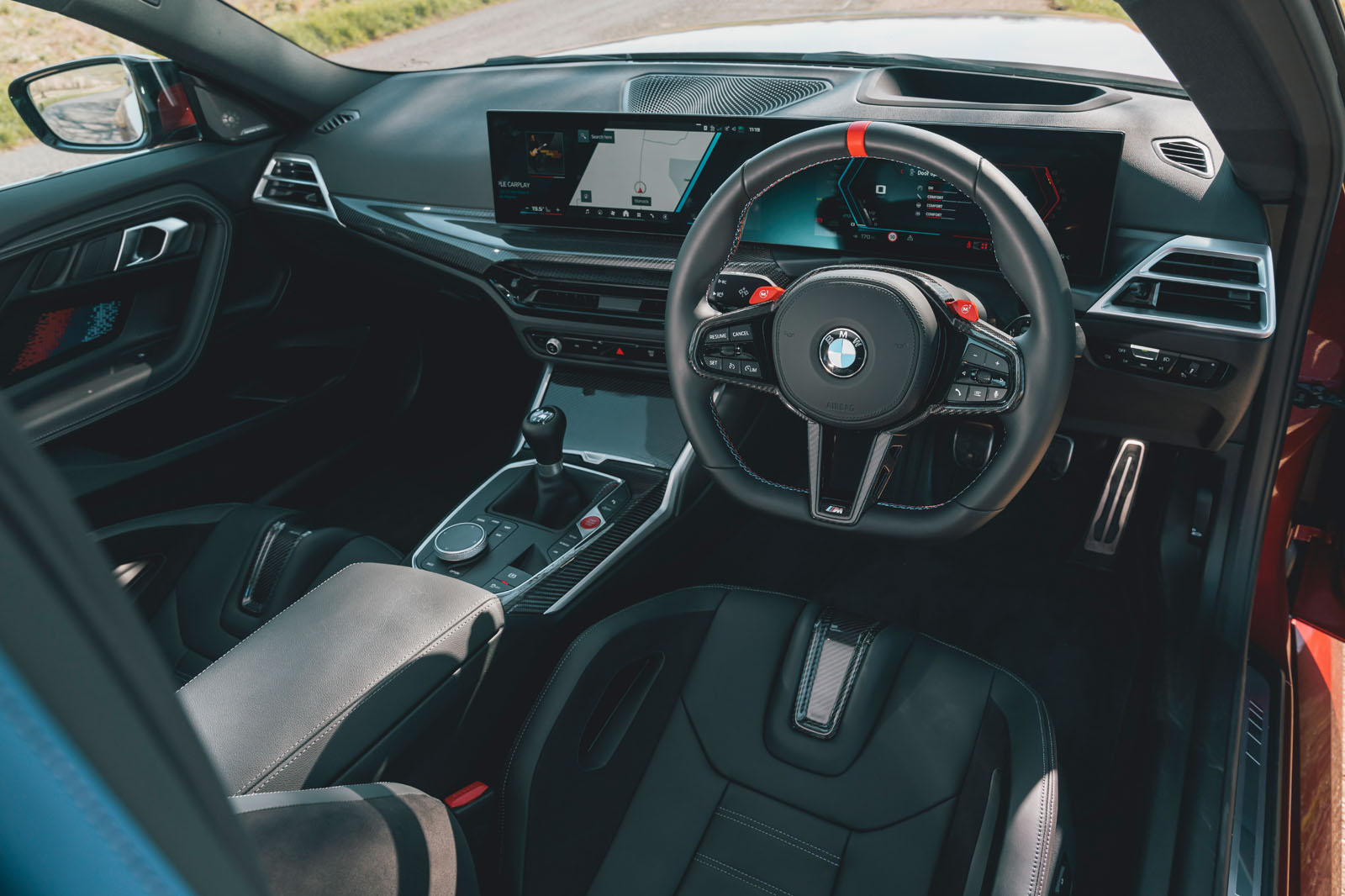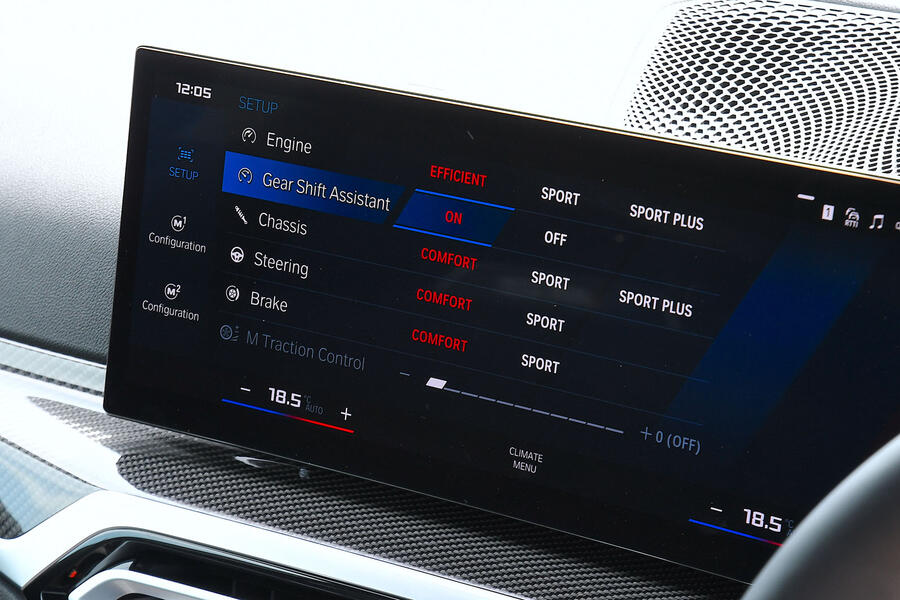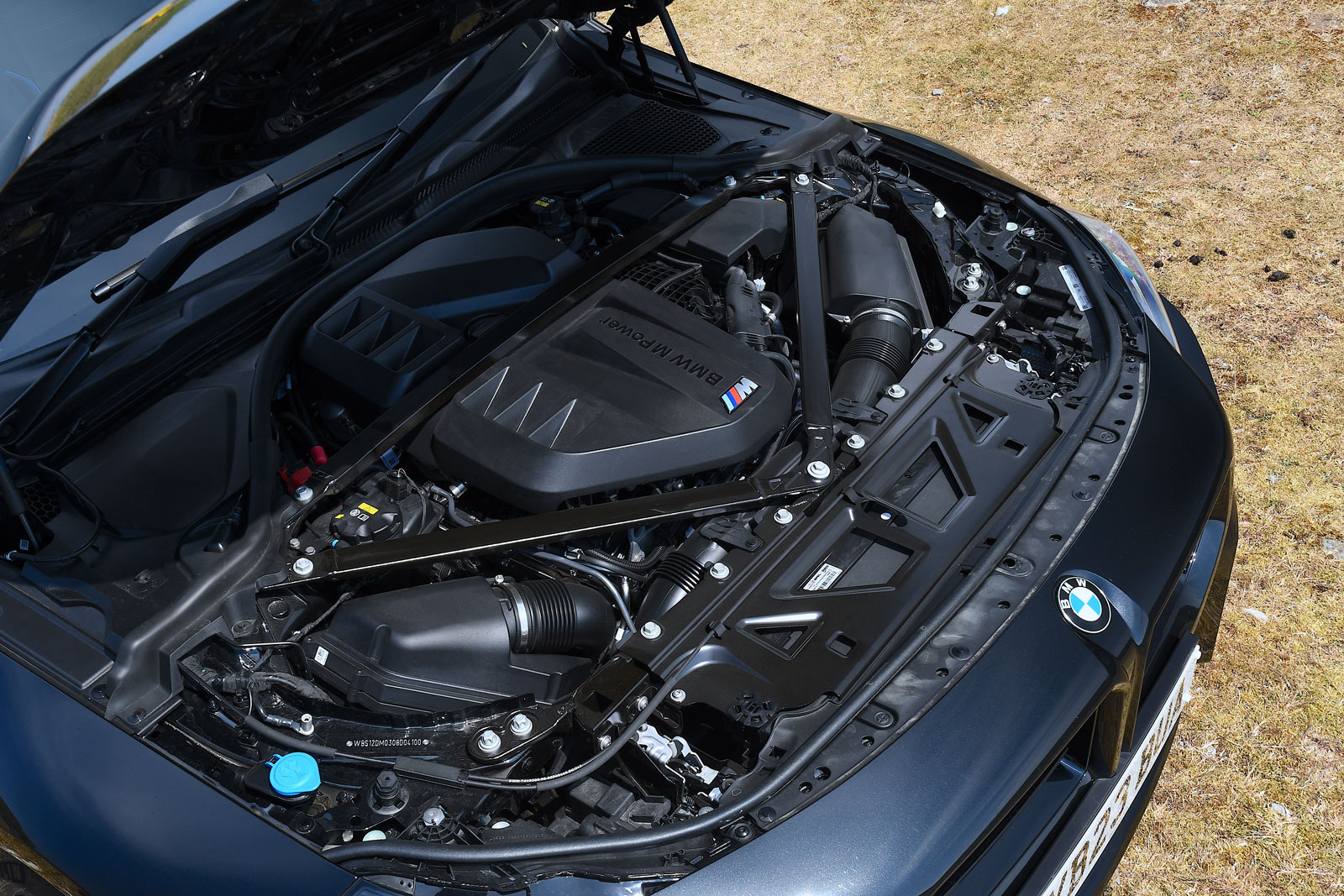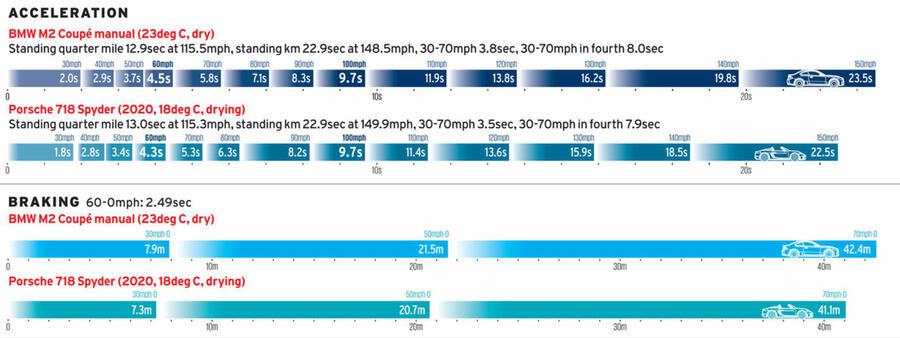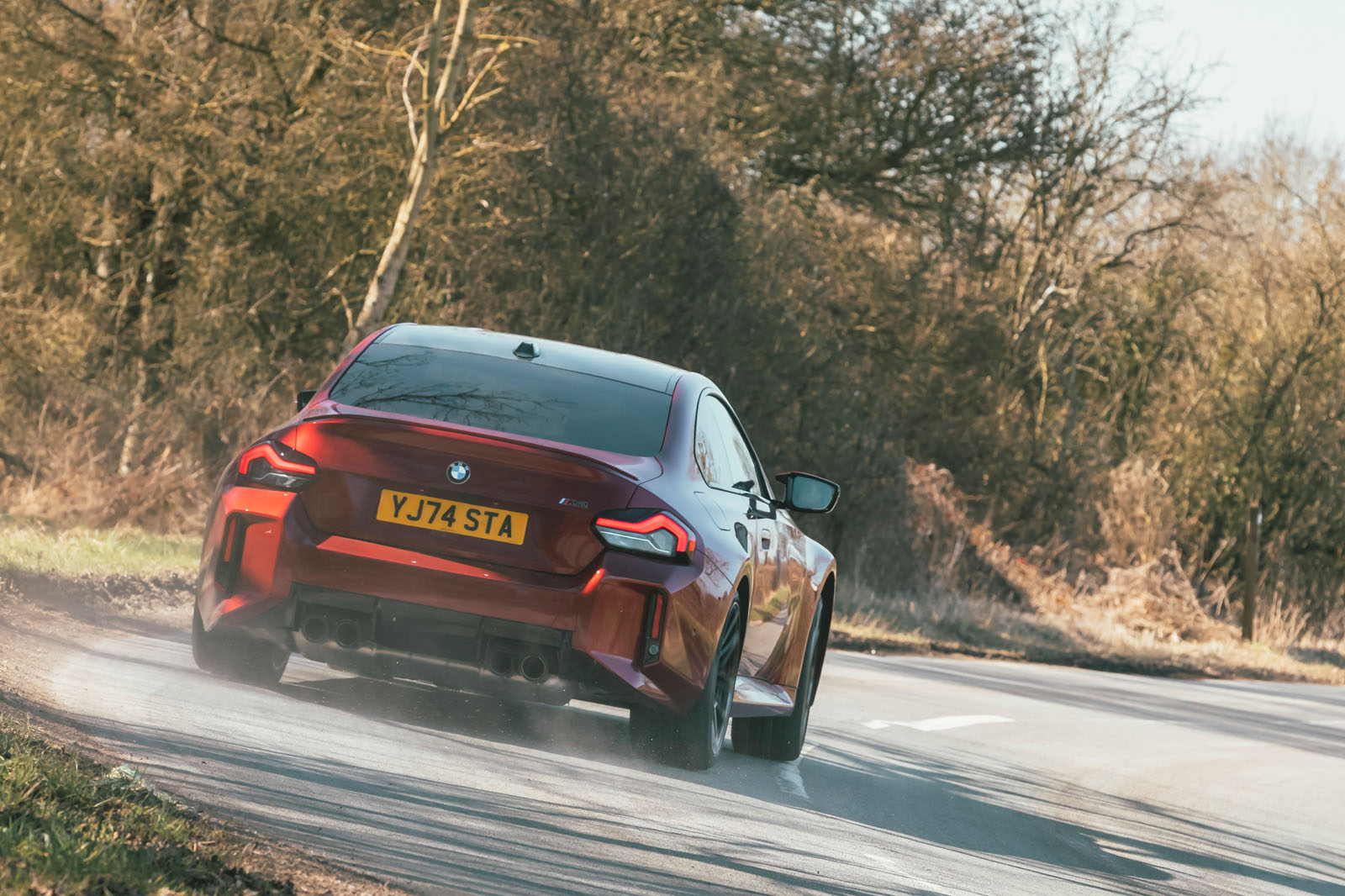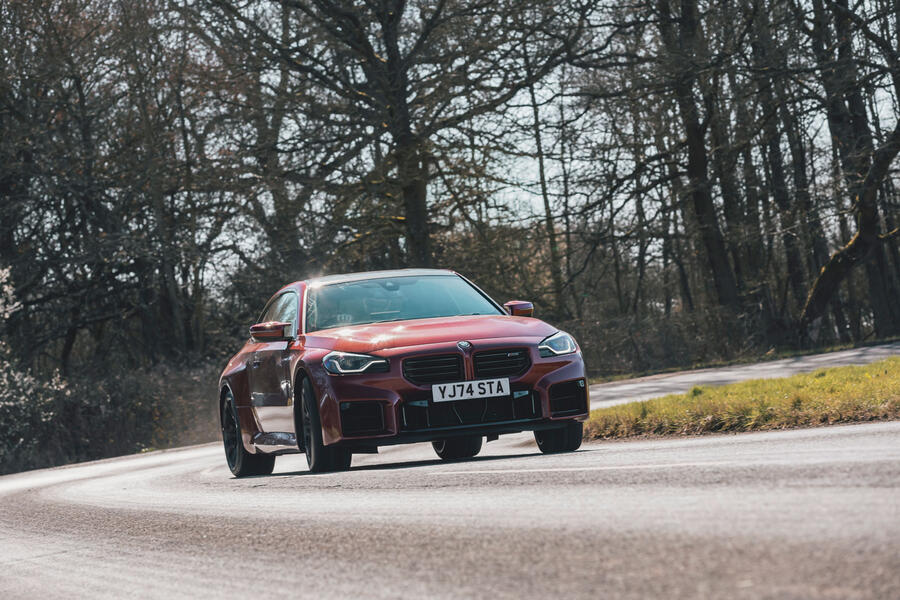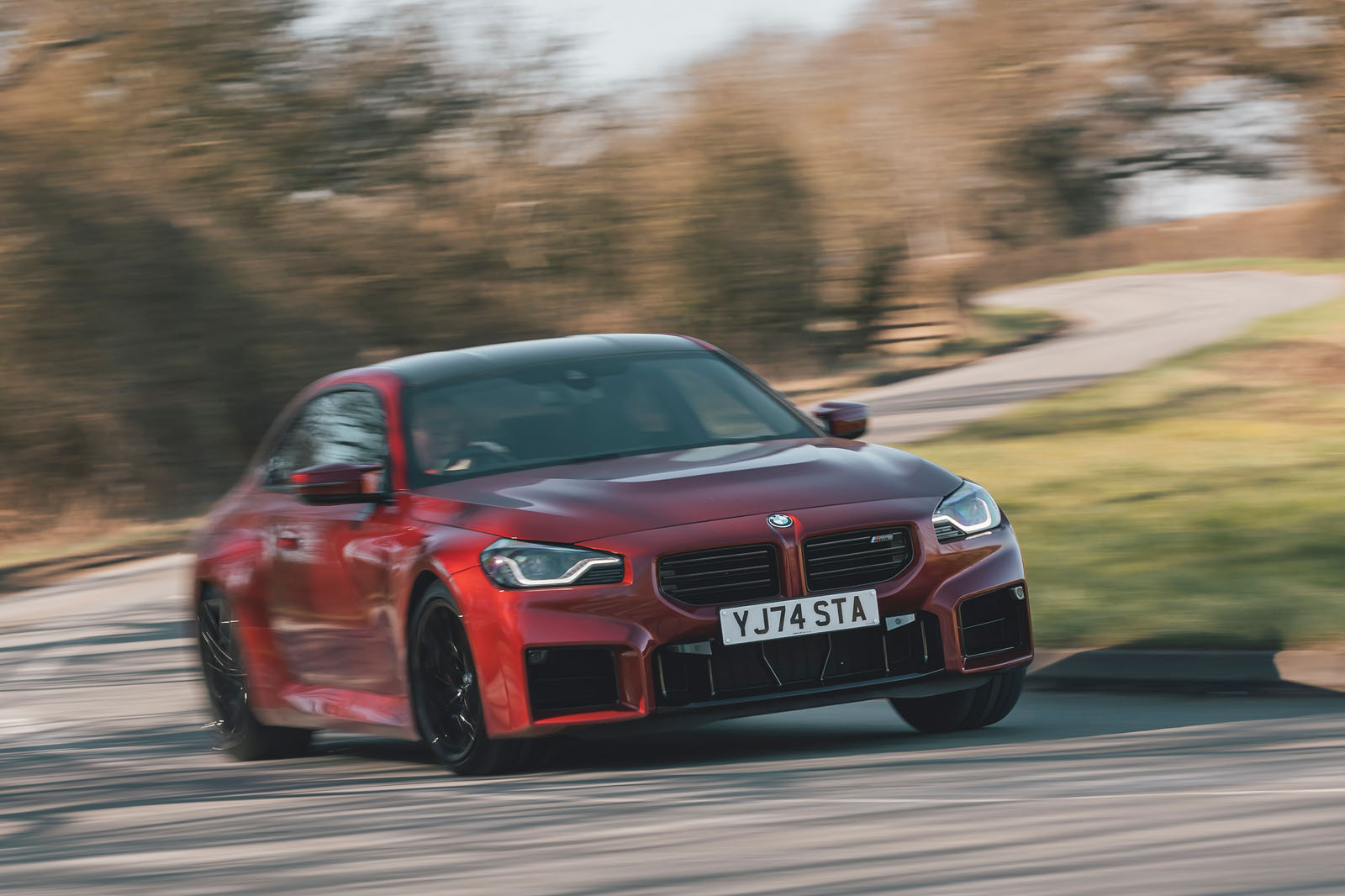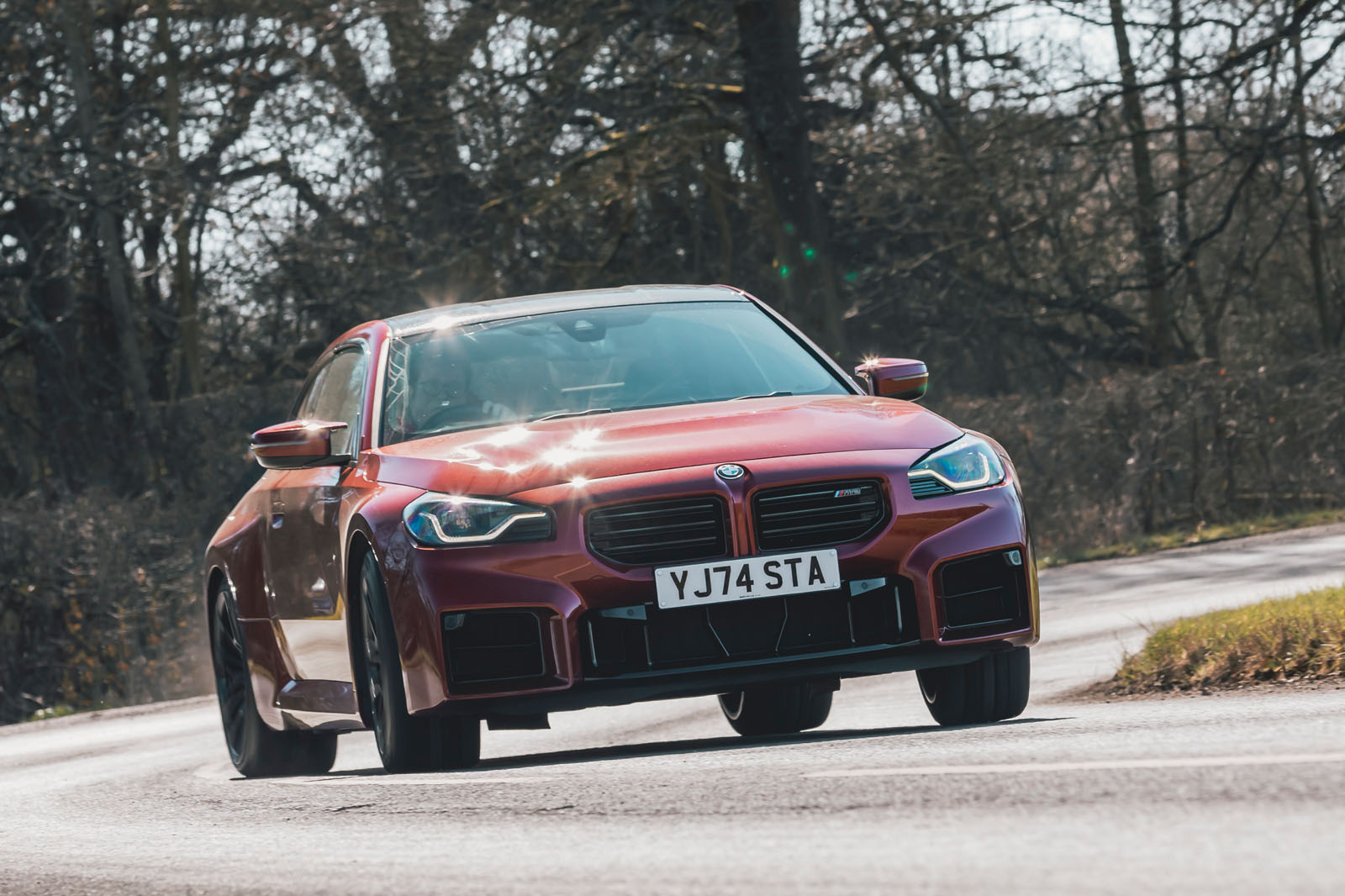When the second-generation BMW M2 was launched, it couldn’t escape comparison with the preceding M2 Competition and 1 Series M Coupé, and sure enough, it wasn’t quite as compact, thuggish or lovable.
Only two years on, it’s getting a model-year update to bring it in line with the rest of the lower half of BMW’s range. Munich is on a big renewal spree: Series 1 through 4 and the X3 have all been updated in the past year. Some are quite substantial, as with the 2 Series Gran Coupé, but you would be forgiven for not noticing the changes to the 2 Series Coupé, on which the M2 is based.
As a reminder, despite sharing most of their model name, those two coupés are mechanically very different. While the four-door is front-wheel drive, the two-door is effectively a shortened 4 Series, making it rear-wheel drive (or four-wheel drive in the case of the M240i xDrive), making a proper M version possible.
The exterior changes are minor in the extreme, but there are bigger tweaks to the interior, the engine has gained 20bhp and there have been some more nebulous suspension changes. Can the M2 step out the shadows of its predecessors?
The range at a glance
| Models | Power | From |
|---|---|---|
| M2 Coupé M Steptronic auto | 473bhp | £68,705 |
| M2 Coupé manual | 473bhp | £70,630 |
As before, the M2 has an eight-speed automatic gearbox as standard, and you have to pay extra to get the six-speed manual.
For 2025, BMW has significantly expanded the number of available paint colours. There used to be just six, now there are 10. It has also added the option of silver wheels. There are a number of separate options and one big option pack, the M Race Track Pack, which adds the carbonfibre roof and front seats, carbonfibre interior trim and a higher top speed



